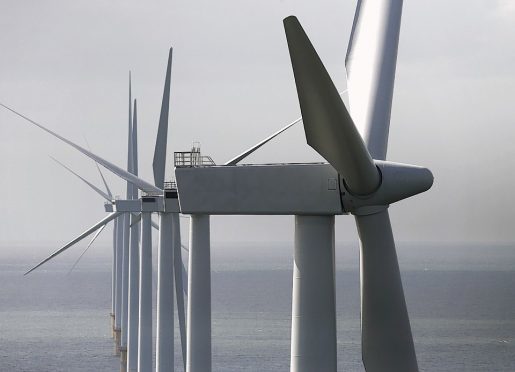A new report has highlighted that onshore wind farms in the north-east are still generating less than a third of the electricity they could.
Estate agent Savills charted the “exceptional growth” of turbines in Aberdeenshire and said the region’s experience could be an example to other parts of the UK.
It found that around a fifth of all of Scotland’s wind power production was concentrated in the area, with enterprising farmers and others behind a private-sector boom.
The new research showed that technological improvements and better site design had increased efficiency with output up nearly eightfold in the last decade.
But it added that increasingly-squeezed producers might need to join forces to maximise benefits in future.
And there remains a significant gap between the theoretical quantities bigger operations could supply to the grid and the day-to-day realities.
Savills stated: “According to our research, between 2005 and 2016, the performance of projects over 250KW in Aberdeenshire ranged from an average capacity factor of 14% in 2007 to 32% in 2015.”
That was “generally in line with all stations in Scotland and the UK average, albeit slightly ahead since the second quarter of 2015”.
Savills has recommended that, in order to maximise the economic benefits in future, “operators with small numbers of projects should consider partnering with others to deliver economies of scale”.
And it added people should “expect to see a growth in extensions to existing projects”.
“Opportunities remain for smaller projects to achieve a premium price for the electricity generated by establishing links with a neighbouring high-energy user capable of utilising the energy.”
Nick Green, Savills UK Scotland-based head of renewable energy, said Scotland’s geography and government policies put it in an “ideal position to become a global leader” in renewables.
But he added: “The growth of the sector is only part of the story and projects must be proactively managed to ensure they continue to generate both electricity and income for those that operate them.
“This is particularly true in the face of the changes that the sector has gone through over the past 18 months which has increased the financial pressure on projects.
“Taking such an approach can mitigate against any future unforeseen events that could impact on cash flows.”
